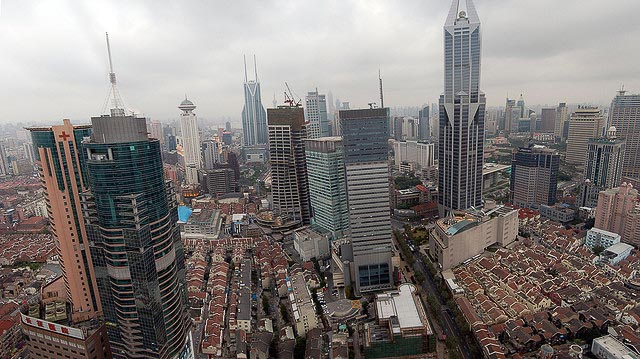The vast migration of Chinese residents from rural to urban areas to work in factories and in construction has played a significant role in the country’s dramatic economic growth.
But the trend has also raised human rights concerns, as migrants to cities have found themselves without the same government services of cities’ other residents.
The country’s hukou system requires households to register their residence with the government. Those registration requirements essentially prevent people from moving between urban and rural areas. Migrants who come to cities anyway wind up without the same welfare opportunities as their fellow citizens. They’re referred to as non-hukou migrants.
From the mid-1980s until 2010, China’s population of non-hukou migrants increased from 6.57 million to 22.1 million. Non-hukou migration accounts for nearly half of the country’s urbanizing population. In Shanghei, the 24.15 million population includes 10 million of these migrants.
Researchers Jing Tan and Yuan Ren sought to determine whether non-hukou migrants in Shanghai are a cause of “urban disease” – poverty, crime, and a decrease in social stability – as they’re often accused.
Their results have implications for governments dealing with all sorts of associated migration and immigration issues.
The Study
The authors built a public safety index, incorporating multiple variables associated with perceived urban problems, and compared it to the concentration of migrants in a given area within Shanghai.
Their model attempts to control for additional socioeconomic and demographic factors that might affect the relationship between migration and crime.
The Findings and Conclusions
In terms of raw numbers, public safety does, in fact, decrease as a neighborhood becomes more skewed towards migrants, the researchers found.
They found a rapid decline safety from 2005 to 2010 in areas where the migrant population grew.
From a citywide perspective, that resulted in heighted problems associated with crime and poverty in the the suburban outskirts of the city, where non-hukou migrants ineligible for certain housing programs settled into slums.
“In terms of the relative congregation of immigrants, without too many changes, during the ten years from 2000 to 2010, migrants mainly concentrate in the suburbs compared to the local residents, while during the same period the suburbs gradually become the more unsafe places,” the researchers wrote.
“Hence, it seems that there is a link on the trend of the immigrants’ gathering and public safety,” they continued.
But the researchers conclude that these relationships are actually an illusion.
After controlling for demographic and socioeconomic factors, non-hukou migrants have no greater influence on public safety than local residents.
The researchers conclude that there are opportunities for migrant-friendly government programs to deal with the root causes of urban ills that appear to be associated with non-hukou migrants.
Age plays a significant role in urban safety, as younger people of all types are more likely to be involved in crime. Migrants tend to be younger, thus accounting for the appearance that they hurt public safety.
To address the role that youth plays in criminal behavior, the disproportionately young migrants could be offered more education programs.
Likewise, criminal behavior shows a strong relationship to residents’ incomes.
Because residents’ income has a strong positive relationship with public safety, “we could easily draw the conclusion (that) stable and good employment will decrease people’s motivation for illegal activities,” they write.
They researchers also associate poor public safety with the “dilapidated” environments in which many migrants live. Those problems could be addressed through government housing investment, they say.
“We often worry that increasing immigrants will lead to sprawl of urban slums, deterioration of urban safety and various urban diseases, however, urban public safety are generally resulted from poor urban management, insufficient community-building and less chances of education and personal development capabilities,” the researchers conclude.
The Implications
The study suggests that the stresses on urban communities and governments caused by dramatic population flows into cities are not best solved simply by a more organized policy permitting migration.
Instead, the solution rely on providing the migrants with equal opportunities for education, employment programs, adequate housing and quality community policing.
Will Migration Worsen Urban Safety? Empirical Studies in Shanghai| Jing Tan, School of Economics; Yuan Ren, School of Social Development and Public Policy; Fudan University; Kinder Institute for Urban Research. March 2015.

